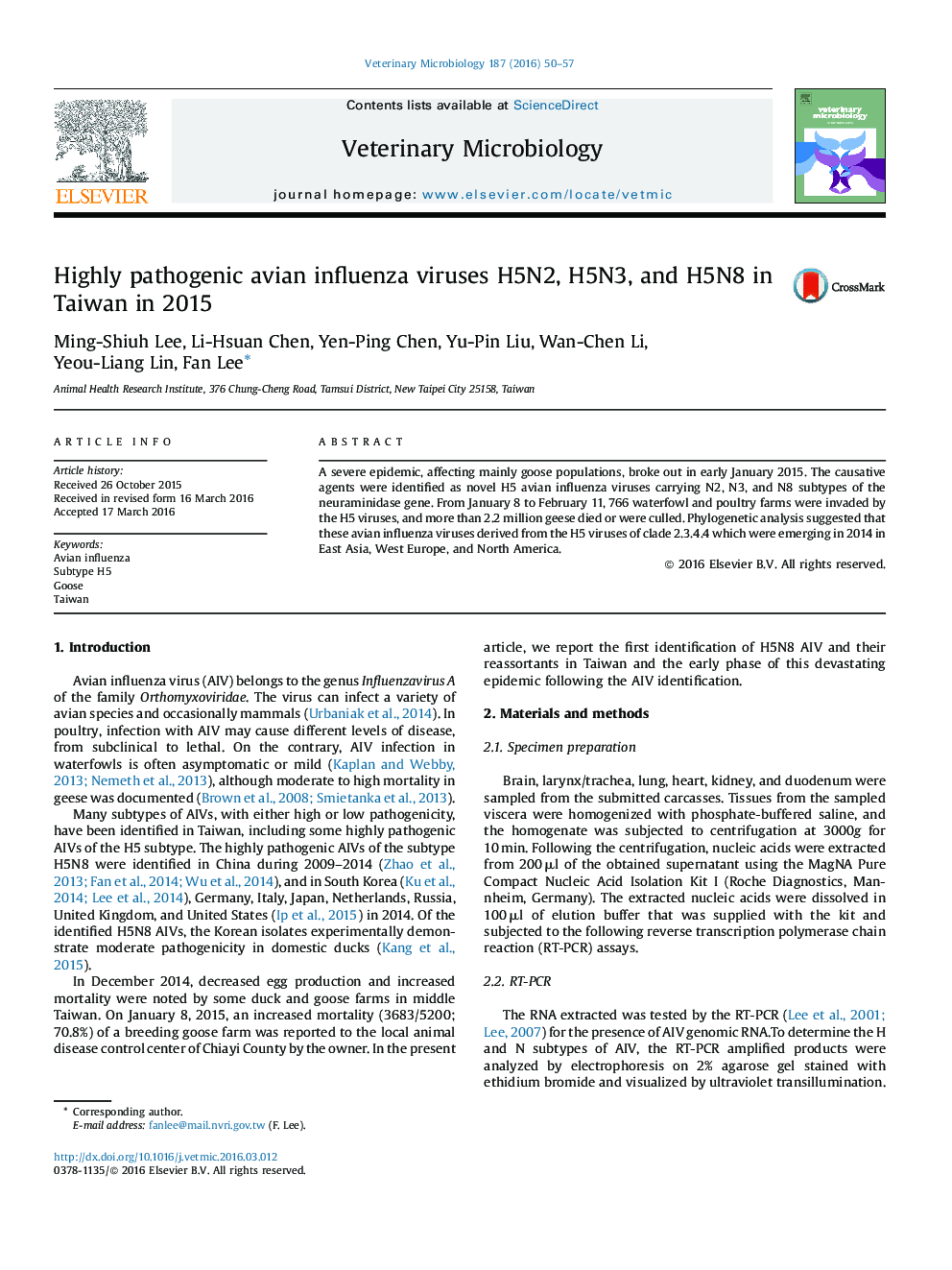| Article ID | Journal | Published Year | Pages | File Type |
|---|---|---|---|---|
| 2466446 | Veterinary Microbiology | 2016 | 8 Pages |
•Multiple subtypes of the novel highly pathogenic avian influenza virus H5 were identified in Taiwan in early 2015.•Of the identified subtypes, H5N3 has been the new subtype that has not been discovered globally.•The newly isolated H5 viruses were highly pathogenic to goose.•Taiwan’s epidemic was a part of the intercontinental spreading of the avian influenza virus H5 of the clade 2.3.4.4.
A severe epidemic, affecting mainly goose populations, broke out in early January 2015. The causative agents were identified as novel H5 avian influenza viruses carrying N2, N3, and N8 subtypes of the neuraminidase gene. From January 8 to February 11, 766 waterfowl and poultry farms were invaded by the H5 viruses, and more than 2.2 million geese died or were culled. Phylogenetic analysis suggested that these avian influenza viruses derived from the H5 viruses of clade 2.3.4.4 which were emerging in 2014 in East Asia, West Europe, and North America.
